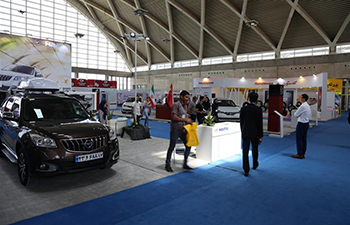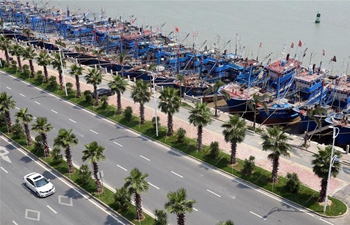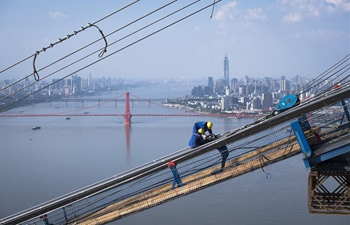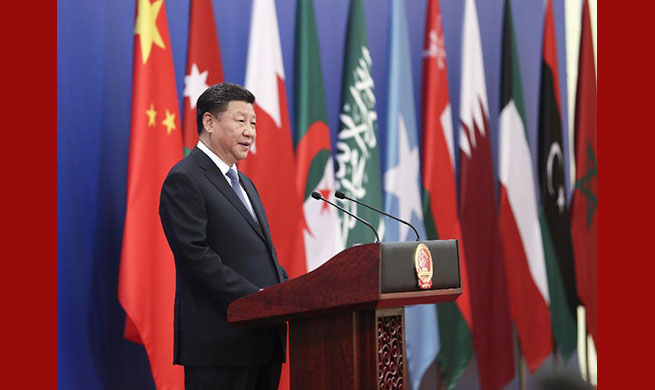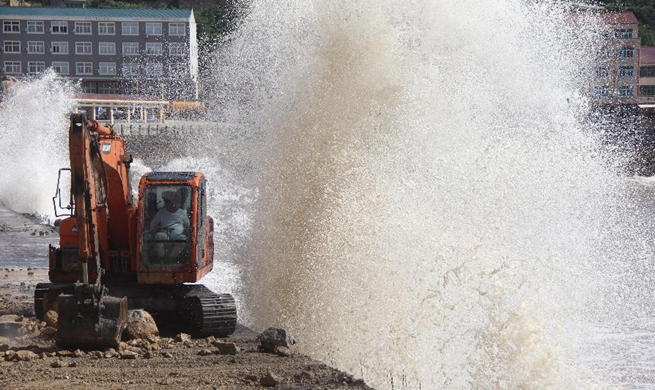ATHENS, July 10 (Xinhua) -- In the conservation laboratories of the National Archaeological Museum in Athens, the preparations for the transfer of more than 300 artifacts of the renowned exhibition "The Antikythera Shipwreck" that are going to travel to Beijing in early autumn are feverish.
The metal exhibits, among them parts from bronze statues like arms and feet found in the shipwreck off the island of Antikythera a century ago which revealed a bronze complex clockwork calculating device, which is considered the first analogue computer in history, are on the working benches of the metal laboratory.
Specialized staff conserves the antiquities and prepare the condition reports before the journey.
"We are inspecting every item separately, we are taking care of the mounting of every single object following the museology study that exists, and we collaborate with our architect on how we are going to present them," the head of the Conservation Department Georgianna Moraitou told Xinhua during a recent interview.
The pace at the Conservation Department is always intensive especially during the preparations of a periodic exhibition that is going to be hosted either in the Museum's halls or another museum in Greece or abroad.
The world's most important museum dedicated to the history of ancient Greece boasts more than 11,000 exhibits from 7,000 BC to the Roman conquest. More than 200,000 antiquities are in storerooms.
Safeguarding museum collection requires specialized expertise in conservation where materials, science, agents of deterioration, climate, environment, and storage are crucial elements. Conservators ensure the wellbeing of the antiquities; the scientific investigation, storage and display of the museum's collection.
"Conservation is the part of all the archaeological science procedure that is the most exciting after the first discovery. We make a second excavation under the microscope, and we are very lucky to discover things, like traces of paint on all kind of materials, or even the fingerprint of a prehistoric workman who touched a ceramic object," Moraitou noted.
Ever since it was founded in mid 19th century the museum has been a center of conservation receiving antiquities from other museums and advising conservation experts from all over Greece.
The primary concern of the conservators is to keep the metal objects in a low humidity environment and stabilize the metal with chemicals for protection, Moraitou explained.
To exhibit antiquities, they follow specific mounting methods which have been evolved from the old times and are less intrusive. Nowadays, they fabricate mounts in Perspex or stainless steel.
"At the end of the 19th century, they used to perforate the walls of a statue, of a bronze statue to mount it, to put it in an upright position. Now we don't perforate, we don't touch the ancient material," Moraitou explained.
At the Sculptures Laboratory, the marble statue of a wrestler, recovered from the Antikythera wreck which occurred around 50BC and was well-preserved by remaining buried in seafloor sediments, is being prepared for the trip to China.
"The artifacts are very corroded from the sea. Until 1900, they were under the sea. We are working with these objects for many years. In 2012, there was the first exhibition in the Archaeological Museum, and there is always something to learn from the objects regarding the difficulties of the corrosion. Now we have to plan every step from here to Beijing," conservator Ioannis Panagakos told Xinhua.
Since most of the objects have been restored a couple of times, one can see the work of the old restorers that dated 30-60 years ago, learn from their mistakes and suggest new techniques with the advanced technological means they have at their disposal.
Regarding the conservation of the sculptures, two elements have priority; the stability and its surface. The old restorers used glues that are not in a perfect condition today, Panagakos noted. There are also metal or iron pins that need to be removed and replaced by modern materials.
"We take pictures in the visible eye, in the UV and IR spectrum so we can understand more clearly the surface of the object. To understand better the corrosion and if the object has some information, for example, color to gather everything in a database," he added.
Museum Director Maria Lagogiannis urged for the extension of Sino-Greek cultural collaboration on restoration technical know-how.
"I believe that besides the exhibitions exchange, there could be a cooperation between the two countries on know-how at the level of conservation. I believe that if we work together, the Greeks will learn a lot from the Chinese, and the Chinese conservators learn from the Greeks as well," she said.
The exhibition "The Antikythera Shipwreck: The Ship, the Treasures, the Mechanism" is part of the cultural exchanges that reached their peak in 2017, the Year of Greece-China Cultural Exchanges that are continuing into 2018.
The exhibits will be hosted at the Forbidden City's Palace Museum in Beijing, the capital city of China, from September until December 2018.
